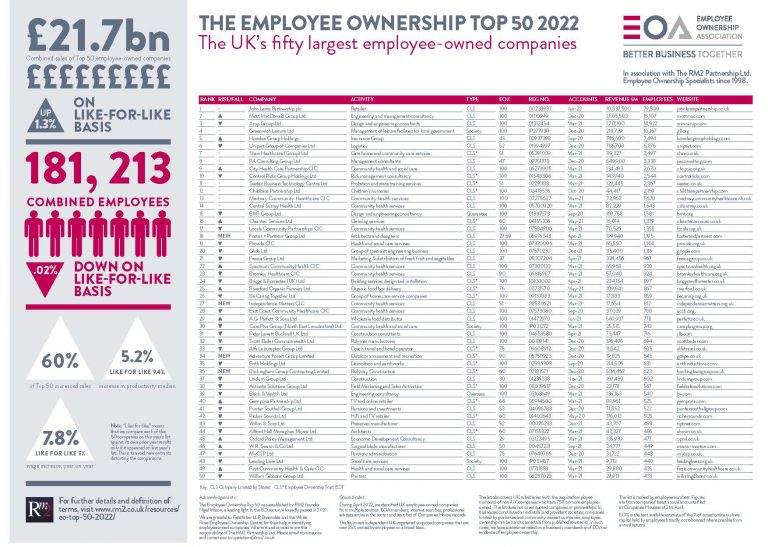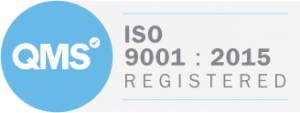
Top 50 employee owned companies in 2022
Key findings:
By tracking the changes in the Top 50 list year-on-year, we get an insight into the performance of the largest employee-owned companies in the UK – how much they have grown, how profitable they are, which trade sectors they operate in, and what legal forms they take.
This year, the list has four new entrants; Foster + Partners Group Ltd, Independence Matters CIC, Adventure Forest Group Ltd (Go Ape) and Buckingham Group Contracting Limited.
Two of the four new entrants are owned by Employee Ownership Trusts (EOTs), bringing the total number of EOT owned companies on the list to 17. We expect that number to increase as EOTs continue to be a popular and flexible succession solution for owners of private companies. We know from our parallel work on the EOT Survey that the number of Employee Ownership Trusts is increasing at a rate of 45% per annum. There were around 800 confirmed EOT-owned companies by the middle of May 2022.
The largest of the EOTs in the Top 50 list is Shaw Healthcare (Group) Limited. This was an EOT that RM2 completed in May 2020, which has over that time increased their employee numbers by 9%.
So the shape of the sector is changing. The Top 50 represent a smaller proportion of total population of employee-owned companies, and there continues to be a great deal of new EOT activity.
Key Facts for 2022
- There are four new entrants: Foster + Partners Group Ltd, Independence Matters CIC, Adventure Forest Group Ltd (Go Ape) and Buckingham Group Contracting Limited.
- Combined sales for the Top 50 is £21.7 billion, which is up 1.3% on a like-for-like basis.
- Total employees for the Top 50 is 181,213 which is up 0.5% from last year.
- The mean change in operating profit for the Top 50 is plus 58%.
- There has been an increase in productivity, defined as value added per employee, of 9.4% on a like for like basis.
- 96% of the companies in the Top 50 have no net debt.
- The number of employees needed to qualify for inclusion in the Top 50 has gone up slightly to 433. Last year it was 418. In 2014, when the Top 50 list was first published, it was 143.
“like for like” means that we compare each of the 50 companies on this year’s list against its own prior year results only if it appeared on last year’s list. This is to avoid new entrants distorting the comparisons.
If you would like to explore what Employee Ownership is why not download our free fact sheets, or contact us at enquiries@rm2.co.uk



